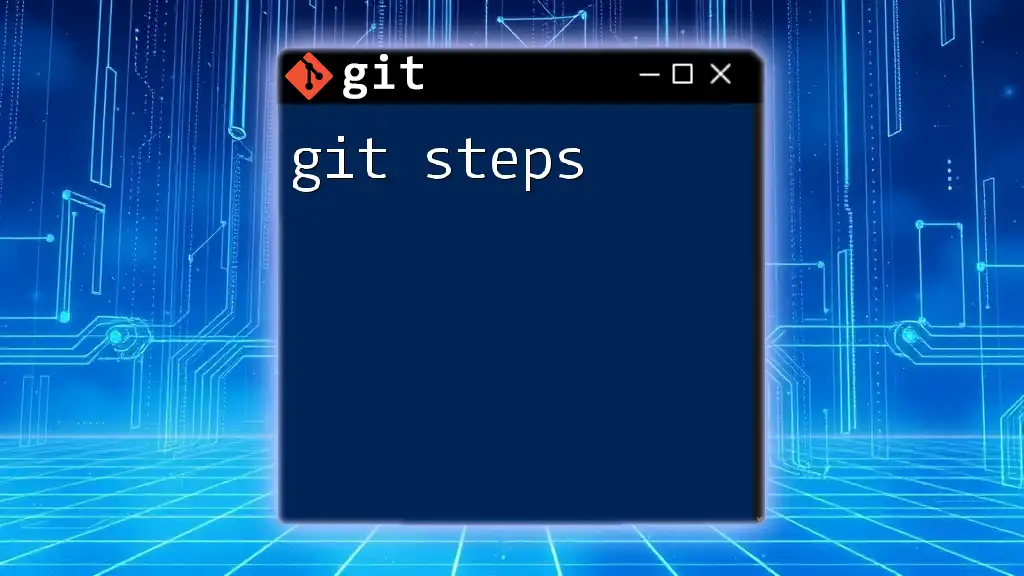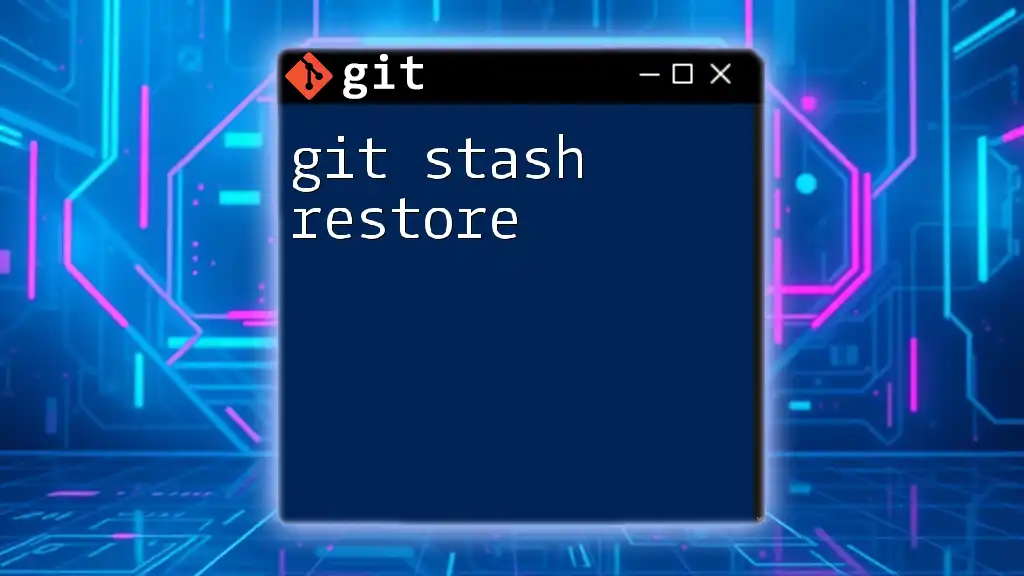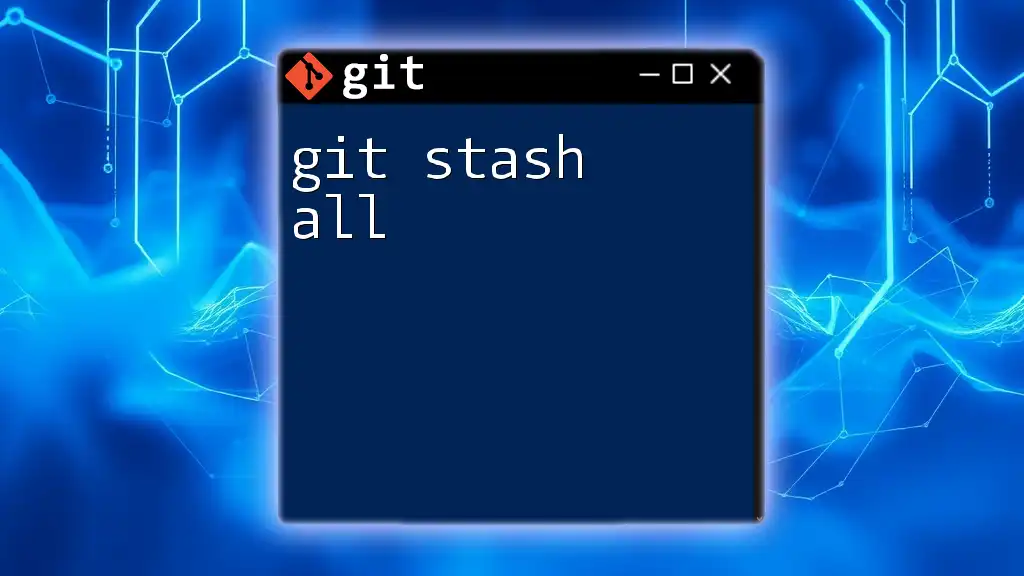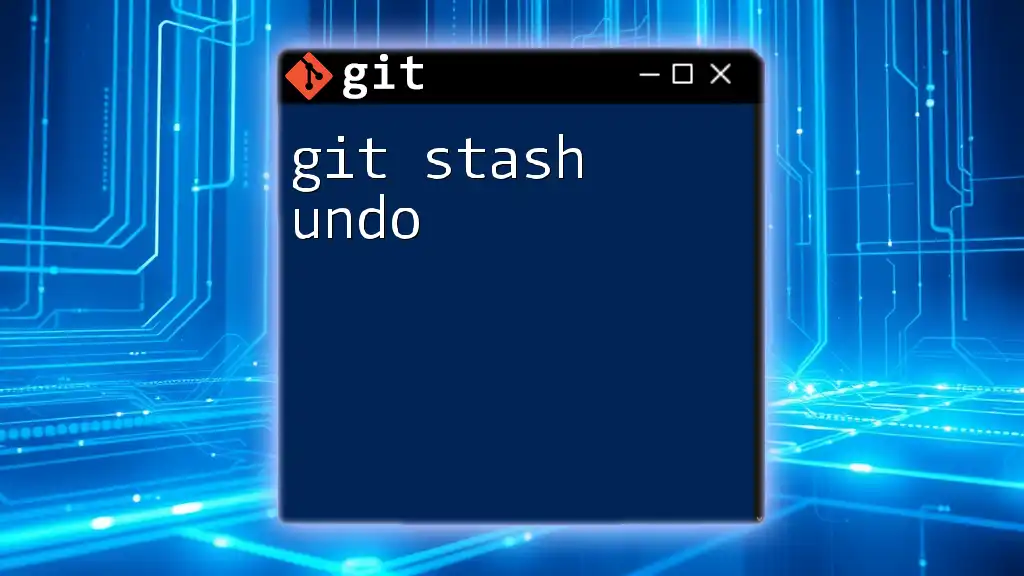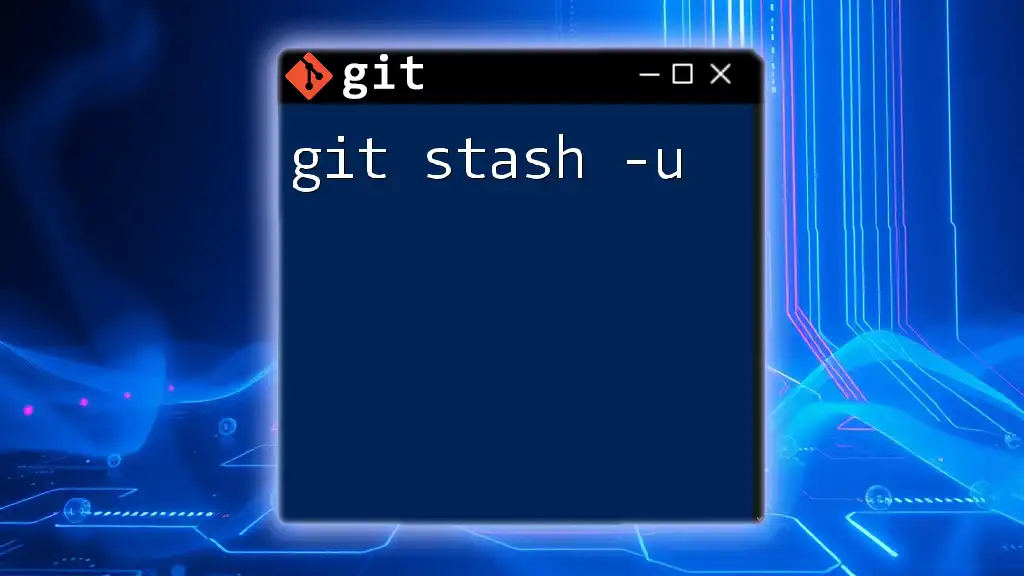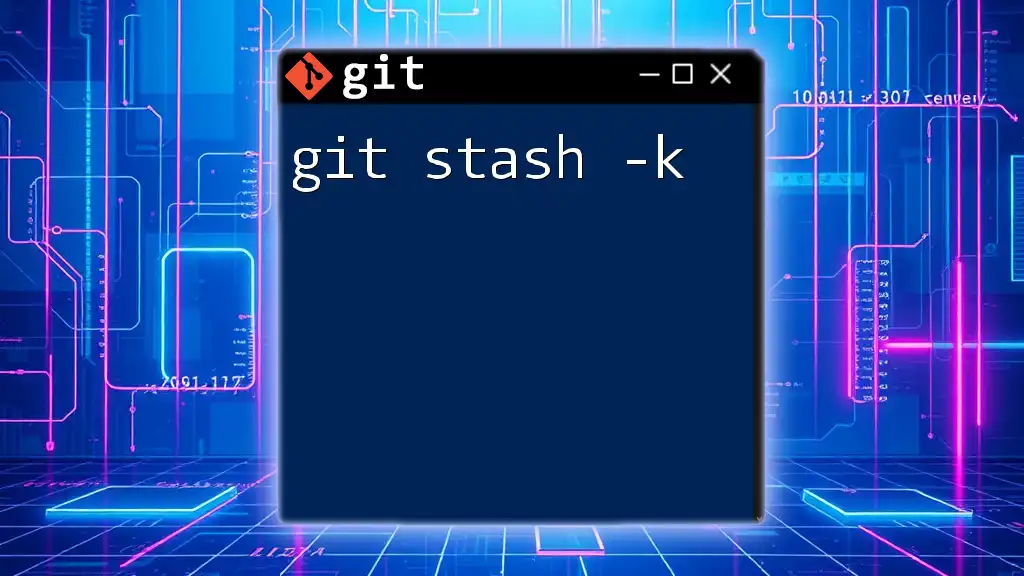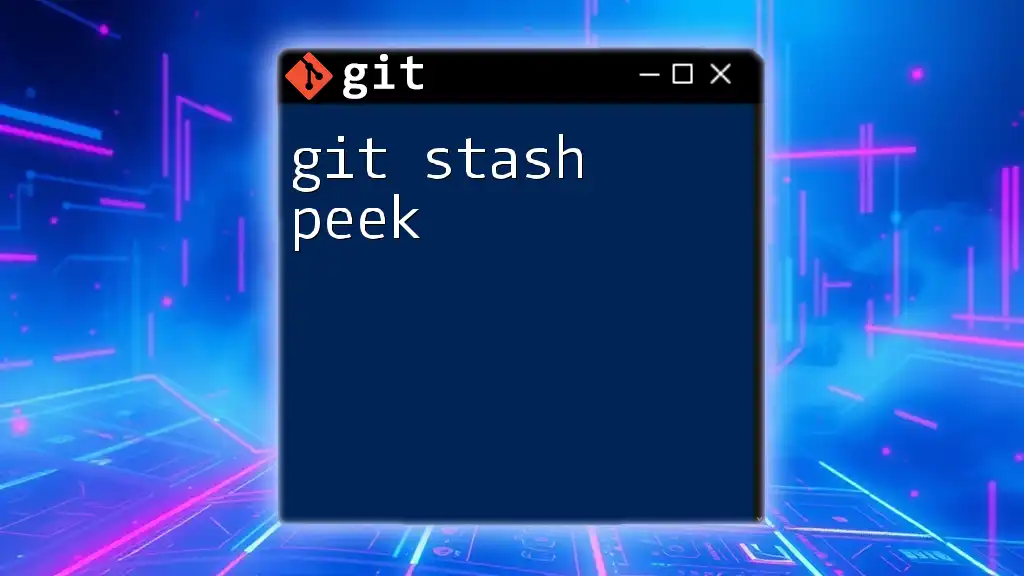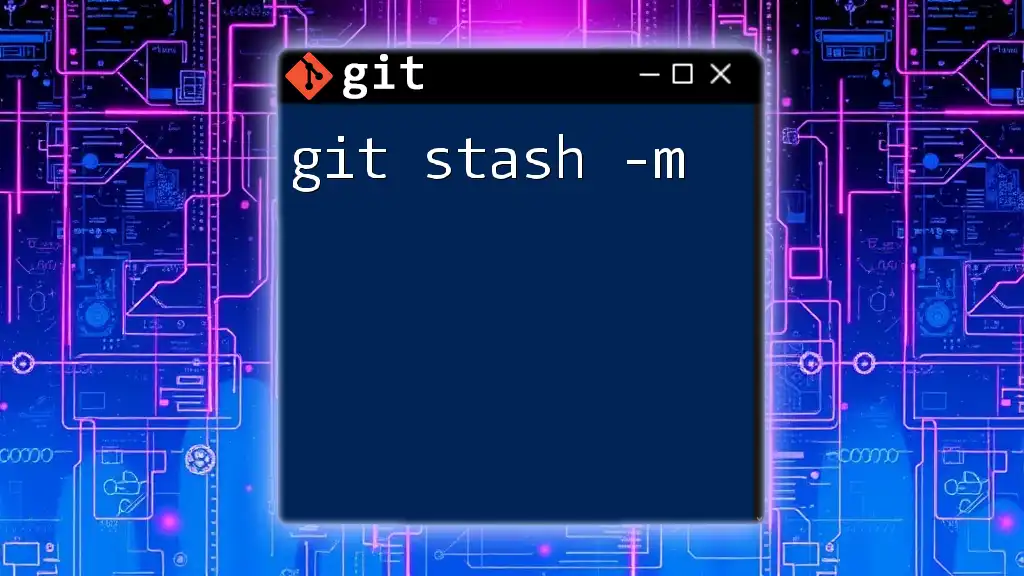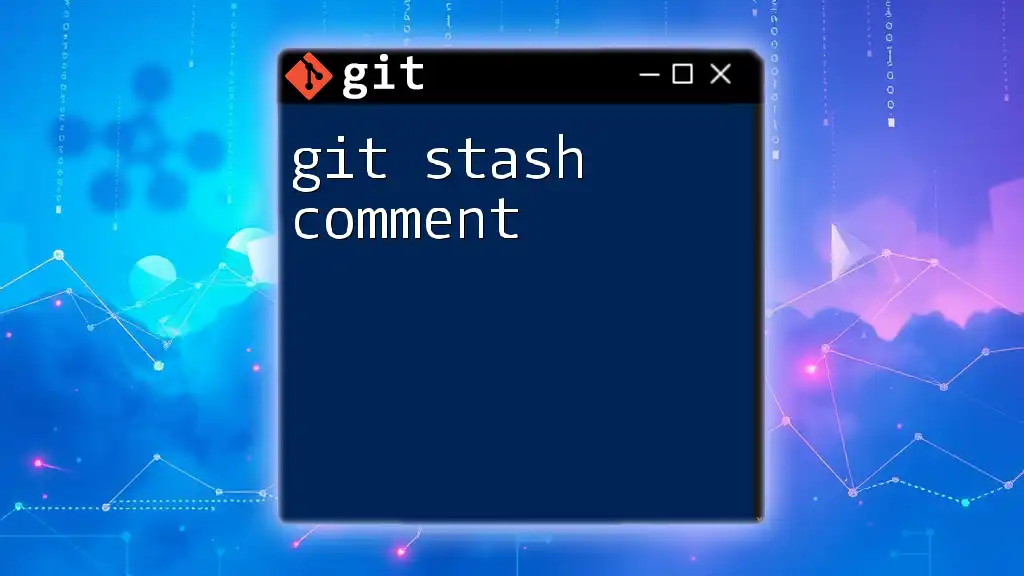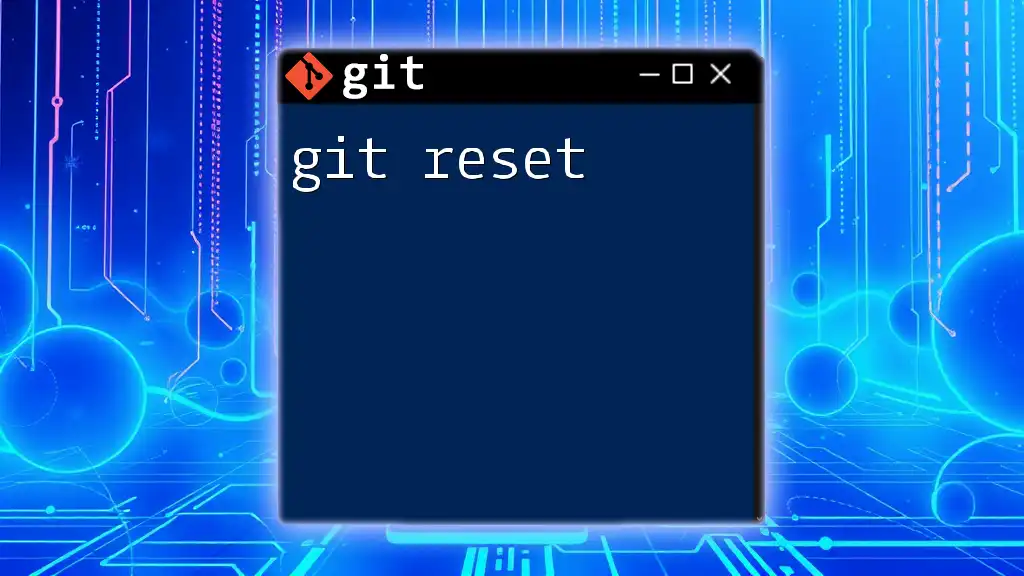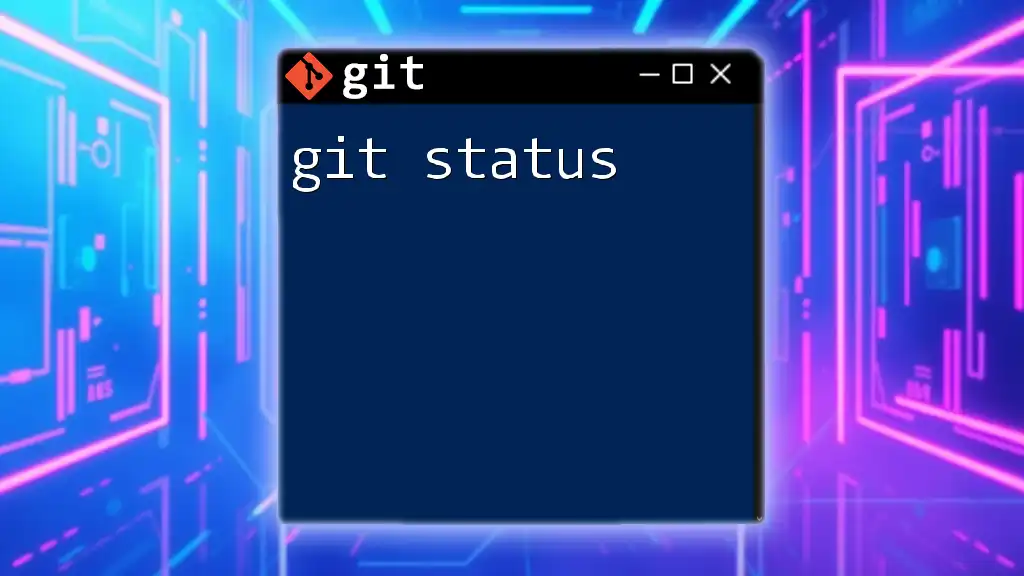"Git steps refer to the essential command-line actions you take to manage version control in your projects efficiently."
Here’s a simple example of key git steps in markdown format:
# Initialize a new Git repository
git init
# Add files to the staging area
git add .
# Commit the changes with a message
git commit -m "Initial commit"
# View the commit history
git log
Understanding Git Steps
Git steps are the sequential actions you take to effectively manage your code using Git, the powerful version control system. Following structured Git steps is vital for maintaining project integrity and facilitating collaboration in development teams.
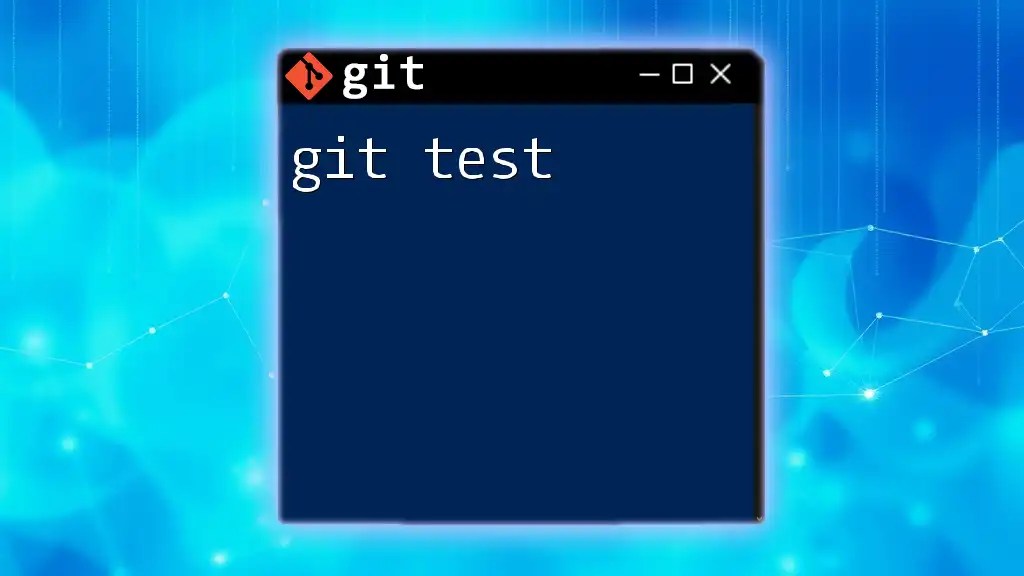
Getting Started with Git
Installing Git
To begin your journey with Git, you first need to install it. The installation process varies based on your operating system:
- Windows: Download the Git installer from the official Git website and follow the installation wizard.
- macOS: You can install Git using Homebrew by running the following command in your terminal:
brew install git
- Linux: For Linux users, the installation process might vary by distribution. For Ubuntu, you can run:
sudo apt-get install git
Configuring Git
After installation, setting up your Git identity is essential. This configuration ensures that your commits are properly attributed to you. You can set up your username and email with the following commands:
git config --global user.name "Your Name"
git config --global user.email "your.email@example.com"
Using the `--global` flag sets these values for all your repositories. If you wish to set them for a single repository, simply remove the flag when executing the commands.
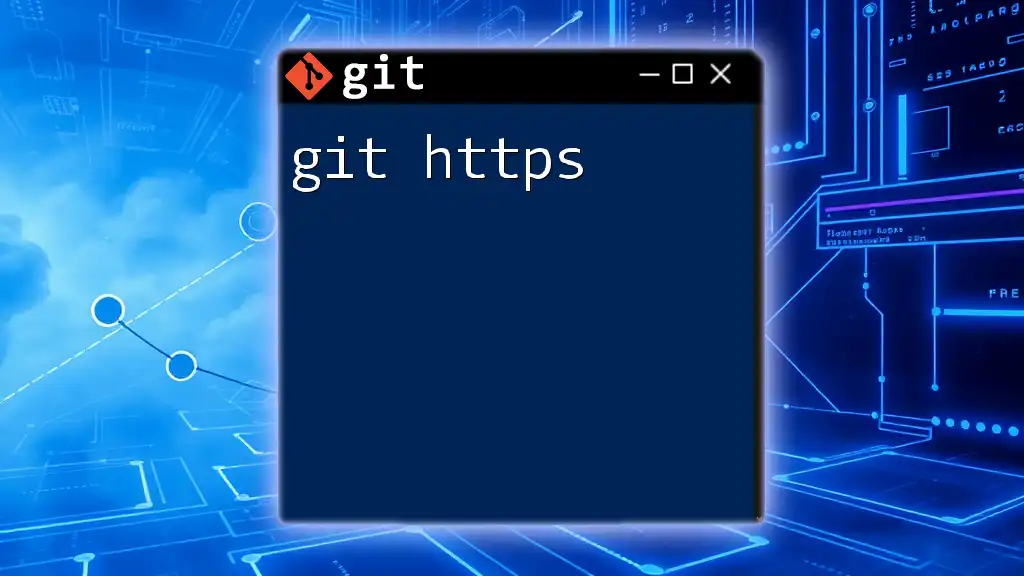
Basic Git Workflow
Creating a Repository
Now that Git is installed and configured, you can create your first repository. A repository (or repo) is where your project files and version history reside. To create a new repository, navigate to your desired project directory and execute:
git init project-name
This command initializes a new Git repository called `project-name`.
Cloning a Repository
If you are starting from an existing project, you'll want to clone a remote repository to your local machine. Cloning copies all files and the entire commit history. Use the command:
git clone https://github.com/user/repository.git
This command fetches the repository from GitHub and creates a local copy.
Making Changes
After setting up your repository, it's time to start working on your project. When you make changes to files, you can assess the current state of your repository at any time by running:
git status
This command shows you which files are tracked, untracked, modified, or staged.
Staging Changes
Before committing any changes, you need to stage them. Staging allows you to review and select changes that you want to include in the next commit. You can stage all changes at once using:
git add .
If you prefer staging specific files, provide their names:
git add file1.txt file2.txt
Committing Changes
Once you've staged the appropriate changes, you can create a commit. A commit serves as a snapshot of your project at a certain point in time, which also includes a message explaining what changes were made. Use the following command:
git commit -m "Add new features"
Make sure to write meaningful commit messages to help clarify the nature of changes for you and your collaborators.
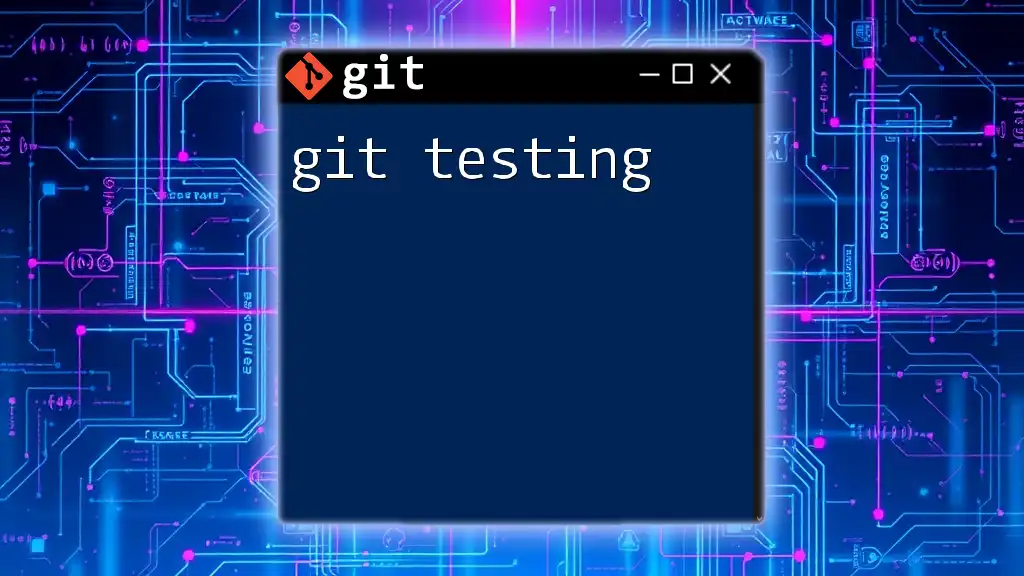
Advanced Git Steps
Working with Branches
Understanding Branches
Branches in Git allow you to work on new features or fixes in isolation from the main project. This means you can experiment without affecting the stable version of your code.
Creating a Branch
To create a new branch, use:
git branch new-feature
Switching Branches
After creating a branch, you can switch to it with:
git checkout new-feature
This command changes your working directory to the `new-feature` branch so you can begin development.
Merging Branches
Once you are done working on a branch, you’ll want to merge it back into your main branch (usually `main` or `master`). Merging combines the changes you made in your branch with the target branch. Use:
git merge new-feature
This may result in a fast-forward merge or a three-way merge depending on your repository’s state.
Collaborating with Others
Fetching Changes
When working with a team, it's crucial to stay up-to-date with changes happening in the remote repository. To fetch changes without applying them, use:
git fetch origin
This command downloads the latest commits from the remote repository without merging them into your local branch.
Pushing Changes
Once you've made your commits and are ready to share them, you can push your local changes to the remote repository:
git push origin main
This synchronizes your local commits with the remote version of the project.
Pulling Changes
To incorporate changes made by others into your local repository, use:
git pull origin main
This command fetches and merges changes in one step, ensuring you are working with the most recent version of the code.
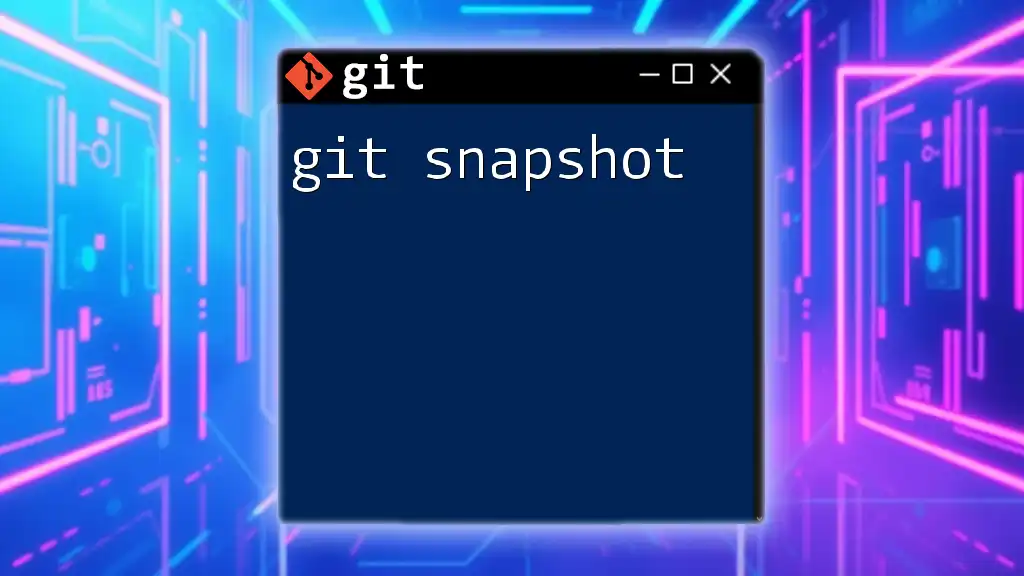
Troubleshooting Common Issues
Undoing Changes
Mistakes happen; luckily, Git provides ways to undo changes. You can undo your last commit, which keeps changes staged:
git reset --soft HEAD~1
If you need to unstage a file, use:
git reset HEAD file.txt
Resolving Merge Conflicts
When merging branches, conflicts can occur if two branches change the same line. Git will notify you of these conflicts, and you'll need to manually resolve them by editing the conflicting files to remove ambiguity.
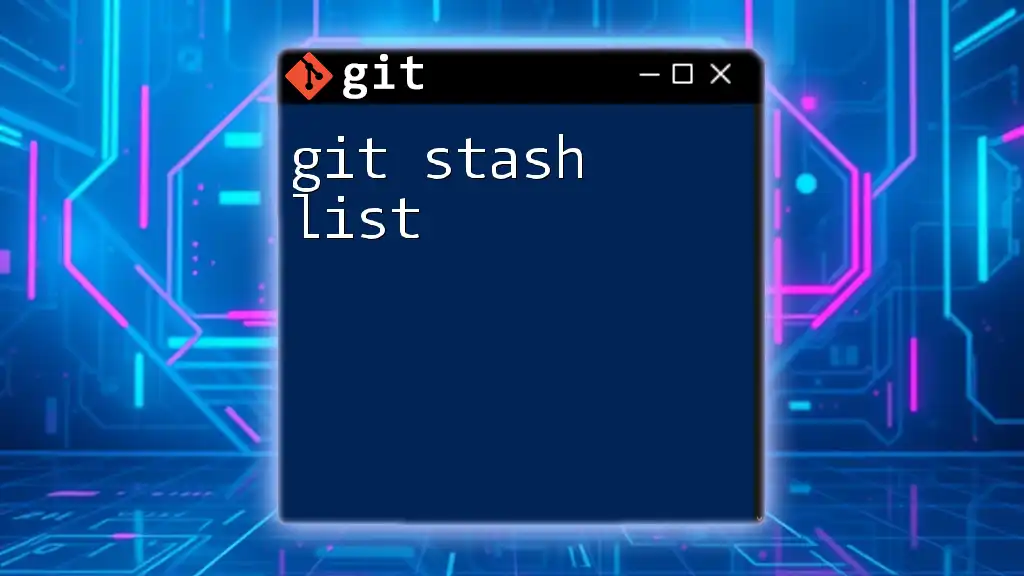
Best Practices for Git
Commit Often, Commit Early
By committing often, you create a thorough history of your changes. This allows you to revert back to stable states if necessary.
Write Meaningful Commit Messages
Effective commit messages provide clarity. Mention what was changed and why; this practice is immensely helpful for both you and your collaborators.
Regularly Pull Changes from Remote
Always ensure that your local copy of the code reflects the latest version in the remote repository. Regular pulls help prevent merge conflicts down the line.
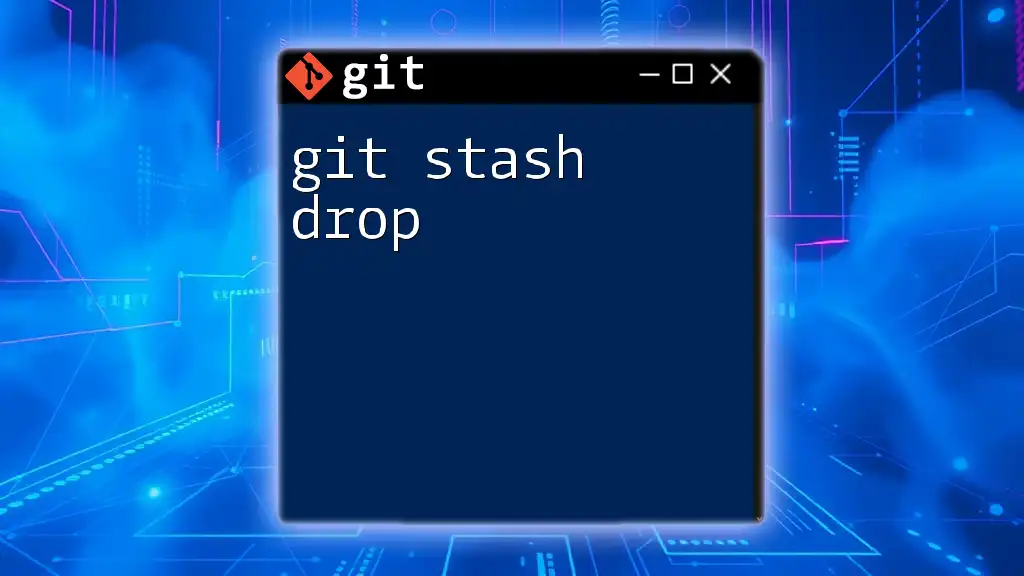
Conclusion
Mastering the essential git steps is fundamental for anyone looking to work effectively in software development. By understanding the nuances of creating repositories, staging changes, and collaborating with others, you'll place yourself in a strong position to manage code and contribute to projects seamlessly.

Additional Resources
For further learning, consider exploring interactive Git tutorials and resources on the official Git website. Understanding these git steps not only aids individual development but enhances teamwork, impacting the success of your projects.

